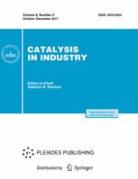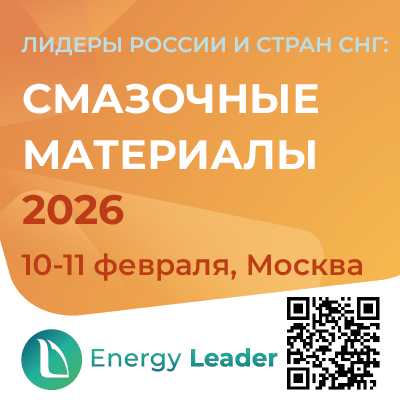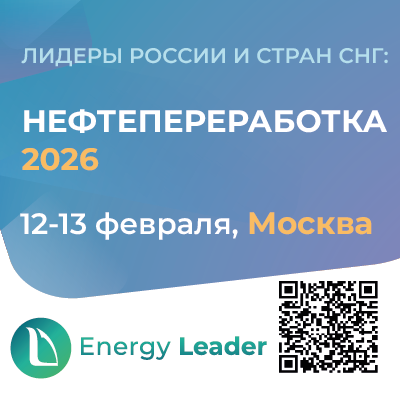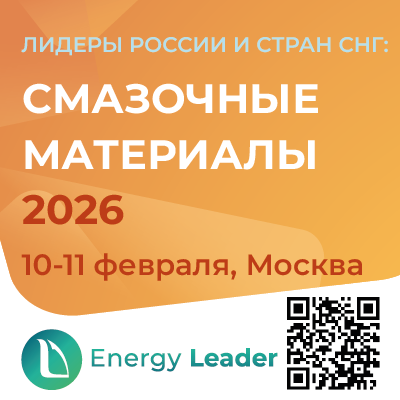The influence of chemical composition and preparation procedure on CO2 capture performance of NaNO3 /MgO-based sorbents
https://doi.org/10.18412/1816-0387-2023-6-5-16
Abstract
MgO based sorbents modified by 5–50 mol.% NaNO3 have been prepared by various methods and investigated in detail. It has been showed that optimal synthesis method is incipient wetness impregnation of MgO precursor with sodium nitrate water solution. The highest sorption capacity of 6.5 mmol CO2 g–1 sorb after 1 hour of sorption from the gas mixture with 50 vol.% CO2 at 320 °C was achieved using the MgO modified by 10 mol.% NaNO3. Sorption capacity for MgO modified by 10 mol.% NaNO3 during 10 consecutive sorption-desorption cycles is approximately 4.5–5.5 mmol CO2 g–1 sorb. The duration of the sorption stage is 30 min, the CO2 content in the feed gas is 50 vol.% and sorption-regeneration temperature is 300–350 °C respectively. It has been showed that increasing the sorption pressure to 10 bar allows reducing sorption temperature from 320 °C to 220–260 °C. The sorption capacity is reached up to 4.0 mmol CO2 g–1 sorb at 25 vol.% CO2 that is twice higher than that at 1 bar. It has been demonstrated that steam and hydrogen treatment before sorption doesn’t lead to a significant change in the sorption properties and phase composition of NaNO3 modified MgO-based sorbent.
About the Authors
I. E. NikulinaRussian Federation
V. S. Derevshchikov
Russian Federation
V. P. Pakharukova
Russian Federation
D. I. Potemkin
Russian Federation
P. V. Snytnikov
Russian Federation
References
1. Arutyunov V., Semenov N.N. // Academia letters. 2021. DOI: 10.20935/AL3692.
2. Apostolou D., Xydis G. // Renew. Sust. Energ. Rev. 2019. V.113. P. 109292–109305.
3. Hu Y., Cui H., Cheng Z., Zhou Z. // Chem. Eng. J. 2019. V.377. P. 119823-119833. DOI: 10.1016/j.cej.2018.08.209.
4. Hwang B. W., Lim J. H., Chae H. J., Ryu H-J., Lee D., Lee J. B., Kim H., Lee S.C., Kim J.C. // PSEP. 2018. V. 116. P. 219-227. DOI: 10.1016/j.psep.2018.02.008.
5. Wang Y., Memon M.Z., Seelro M.A., Fu W., Gao Y., Dong Y., Ji G. // Int. J. Hydrog. Energy. 2021. V. 46. P. 23358-23379. DOI: 10.1016/j.ijhydene.2021.01.206.
6. Bang G., Kim K-M., Jin S., Lee C-H. // J. Chem. Eng. 2022. V. 433. P.134607-134615. DOI: 10.1016/j.cej.2022.134607.
7. Lee C.H., Kim S., Yoon H. J., Yoon C. W., Lee K. B. // Renew. Sust. Energ. Rev. 2021. V. 145. P. 111064-111073. DOI: 10.1016/j.rser.2021.111064.
8. Liu, M.; Vogt, C.; Chaffee, A.L.; Chang, S.L.Y. // J. Phys. Chem. C. 2013. V. 117. P. 17514-17520.
9. Dunstan M.T., Donat F., Bork A.H., Grey C.P., Muller C.R. // Chem.Rev. 2021. DOI: 10.1021/acs.chemrev.1c00100.
10. Harada T., Simeon F., Hamad E., Hatton A. // Chem.Mater. DOI: 10.1021/cm503295g.
11. Donat F., Muller C. R. // Curr. Opin. Green Sustain. Chem. 2022. V. 36. P. 100645-100650. DOI: 10.1016/j.cogsc.2022.100645.
12. Wang J., Huang L., Yang R., Zhang Z., Wu J., Gao Y., Wang Q., O’Hare D., Zhong Z. // Energy Environ. Sci. 2014. V.7. P. 3478-3518. DOI: 10.1039/C4EE01647E.
13. Hu Y., Guo Y., Sun J., Li H., Liu W. // J. Mater. Chem. A. 2019. V. 7. P. 20103–20120. DOI: 10.1039/C9TA06930E.
14. Mutch G.A., Shulda S., McCue A.J., Menart M.J., Ciobanu C.V., Ngo C., Anderson J.A., Richards R.M., Vega-Maza D. // J. Am. Chem. Soc. 2018. V. 140. P. 4736–4742. DOI: 10.1021/jacs.8b01845.
15. Hu J., Zhu K., Chen L. // J. Phys. Chem. C. 2007. V. 111. P. 12038–12044. DOI: 10.1021/jp073383x.
16. Ueda W., Yokoyama T., Moro-Oka Y. // Chem. Lett. 1985. V. 14. P. 1059–1062.
17. Gao W., Vasiliades M. A., Damaskinos C. M., Zhao M., Fan W., Wang Q., Reina T. R., Efstathiou A. M. // Environ. Sci.Technol. 2021. V.55. P .4513-4521. DOI: 10.1021/acs.est.0c08731.
18. Qiao Y., Wang J., Zhang Y., Gao W., Harada T., Huang L., Hatton T. A., Wang Q. // Ind. Eng. Chem. Res. 2017. DOI: 10.1021/acs.iecr.6b04793.
19. Yang X., Zhao L., Liu Y., Sun Z., Xiao Y. // Ind. Eng. Chem. Res. 2016. DOI: 10.1021/acs.jecr.6b03909.
20. Уваров Н.Ф. // Успехи химии. 2007. T. 76. С. 454-473. DOI: 10.1070/RC2007v076n05ABEH003687.
21. Vu A-T., Park Y., Jeon P. R., Lee C-H. // Chem. Eng. J. 2014. V. 258. P. 254-264. DOI: 10.1016/j.cej.2014.07.088
22. Boon J., Coenen K., van Dijk E., Cobden P., Gallucci F., van Sint Annaland M. // Advances in Chemical Engineering. 1st ed. Elsevier Inc. 2017. V. 51. P. 1–96. DOI: 10.1016/bs.ache.2017.07.004.
23. Lee C.H., Lee K.B. // Appl. Energy. 2017. V. 205. P.316–322. DOI: 10.1016/j.apenergy.2017.07.119.
24. Li Y., Kottwitz M., Vincent J.L., Enright M.J., Liu Z., Zhang L., Huang J., Senanayake S.D., Yang W.C.D., Crozier P.A., Nuzzo R.G., Frenkel A.I. // Nat. Commun. 2021. V. 12. P. 914-922. DOI: 10.1038/s41467-021-21132-4.
25. Gorlova A.M.; Simonov P.A.; Stonkus O.A.; Pakharukova V.P.; Snytnikov P.V.; Potemkin D.I. // Kinet. Catal. 2021. V. 62. P. 812-819. DOI: 10.1134/S0023158421060057.
26. Gorlova A.M., Karmadonova I.E., Derevshikov V.S., Rogozhnikov V.N., Snytnikov P.V., Potemkin D.I. // Catalysis in Industry. 2022. V. 14. P. 349–356.
27. Harada T., Hatton T.A. // Chem.Mater. 2015. DOI: 10.1021/acs.chemmater.5b03904.
Review
For citations:
Nikulina I.E., Derevshchikov V.S., Pakharukova V.P., Potemkin D.I., Snytnikov P.V. The influence of chemical composition and preparation procedure on CO2 capture performance of NaNO3 /MgO-based sorbents. Kataliz v promyshlennosti. 2023;23(6):5-16. (In Russ.) https://doi.org/10.18412/1816-0387-2023-6-5-16



























